A Novel Method for Multi-Fault Feature Extraction of a Gearbox under Strong Background Noise
Abstract
:1. Introduction
2. Background and New Method
2.1. Introduction of MED
- (1)
- The elements in are all initialized to 1.
- (2)
- The iterative calculation of the equation is performed.
- (3)
- Calculate .
- (4)
- Calculate .
- (5)
- If is less than a given threshold, the threshold of this paper is 0.01, and recursion is stopped. Otherwise, let i increase by 1, and return to step 2.
2.2. Introduction of MOMEDA
3. Performance Evaluation by Simulated Signals
3.1. MED Denoised MK Spectrum
3.2. MED Denoised MOMEDA
4. Multi-Fault Feature Recognition under Strong Noise
5. Application Case
6. Conclusions
Acknowledgments
Author Contributions
Conflicts of Interest
References
- Wang, Z.J.; Wang, J.Y. Weak Fault Diagnosis of Wind Turbine Gearboxes Based on MED-LMD. Entropy 2017, 19, 277. [Google Scholar] [CrossRef]
- Wang, Z.J.; Han, Z.N. A novel procedure for diagnosing multiple faults in rotating machinery. ISA Trans. 2015, 55, 208–218. [Google Scholar] [CrossRef] [PubMed]
- Shi, Z.L.; Song, W.Q.; Taheri, S. Improved LMD, permutation entropy and optimized K-means to fault diagnosis for roller bearings. Entropy 2016, 18, 70. [Google Scholar] [CrossRef]
- Bachschmid, N.; Pennacchi, P.; Vania, A. Identification of multiple faults in rotor systems. J. Sound Vib. 2002, 254, 327–366. [Google Scholar] [CrossRef] [Green Version]
- Patel, T.H.; Darpe, A.K. Coupled bending–torsional vibration analysis of rotor with rub and crack. J. Sound Vib. 2009, 326, 740–752. [Google Scholar] [CrossRef]
- Wang, Y.; Liang, M. Identification of multiple transient faults based on the adaptive spectral kurtosis method. J. Sound Vib. 2012, 331, 470–486. [Google Scholar] [CrossRef]
- Wiggins, R.A. Minimum entropy deconvolution. Geoexploration 1978, 16, 21–35. [Google Scholar] [CrossRef]
- Sawalhi, N.; Randall, R.B.; Endo, H. The Enhancement of Fault Detection and Diagnosis in Rolling Element Bearings Using Minimum Entropy Deconvolution Combined with Spectral Kurtosis. Mech. Syst. Signal Process. 2007, 21, 2616–2633. [Google Scholar] [CrossRef]
- Jiang, R.; Chen, J.; Dong, G.; Liu, T.; Xiao, W. The weak fault diagnosis and condition monitoring of rolling element bearing using minimum entropy deconvolution and envelope spectrum. Proc. Inst. Mech. Eng. Part C 2012, 227, 1116–1129. [Google Scholar] [CrossRef]
- Wang, Z.; Han, Z.; Liu, Q.; Ning, S. Weak fault diagnosis for rolling element bearing based on MED-EEMD. Trans. Chin. Soc. Agric. Eng. 2014, 30, 70–78. [Google Scholar]
- McDonald, G.L.; Zhao, Q. Multipoint Optimal Minimum Entropy Deconvolution and Convolution Fix: Application to vibration fault detection. Mech. Syst. Signal Process. 2017, 82, 461–477. [Google Scholar] [CrossRef]
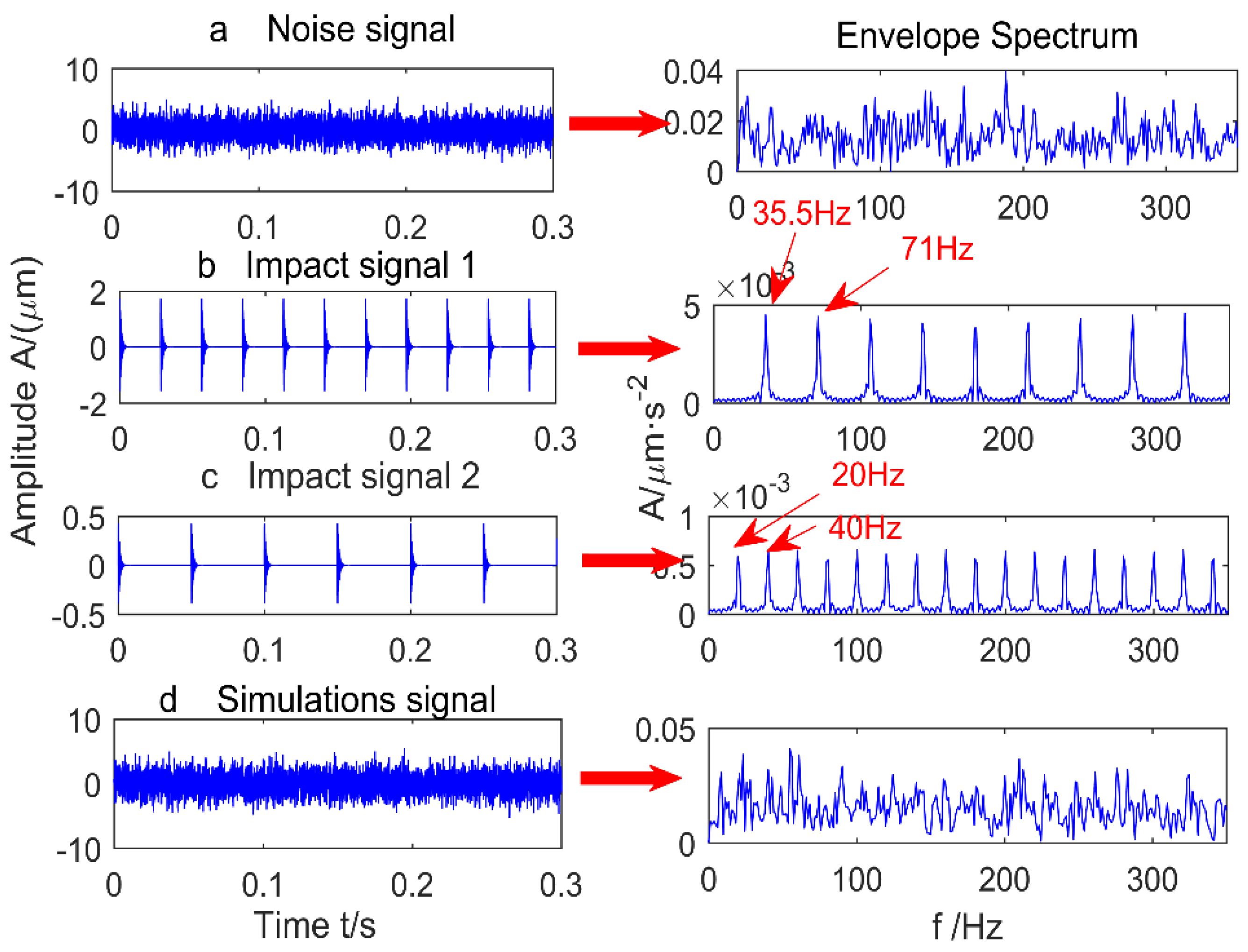
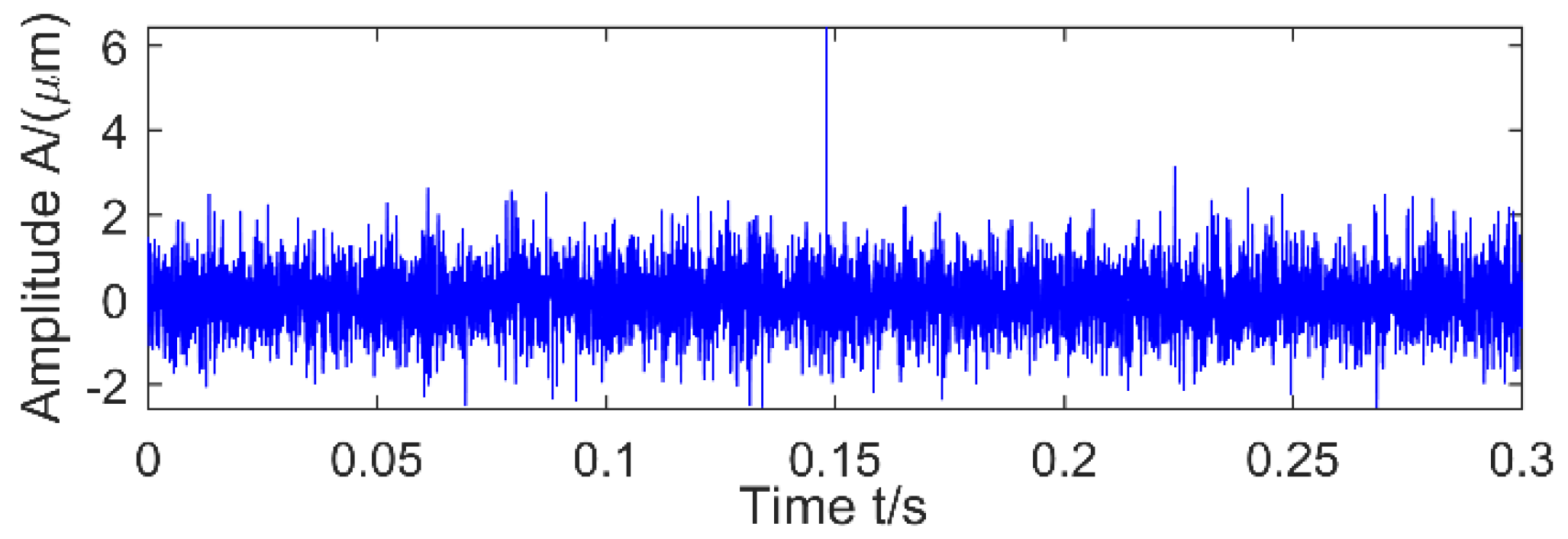




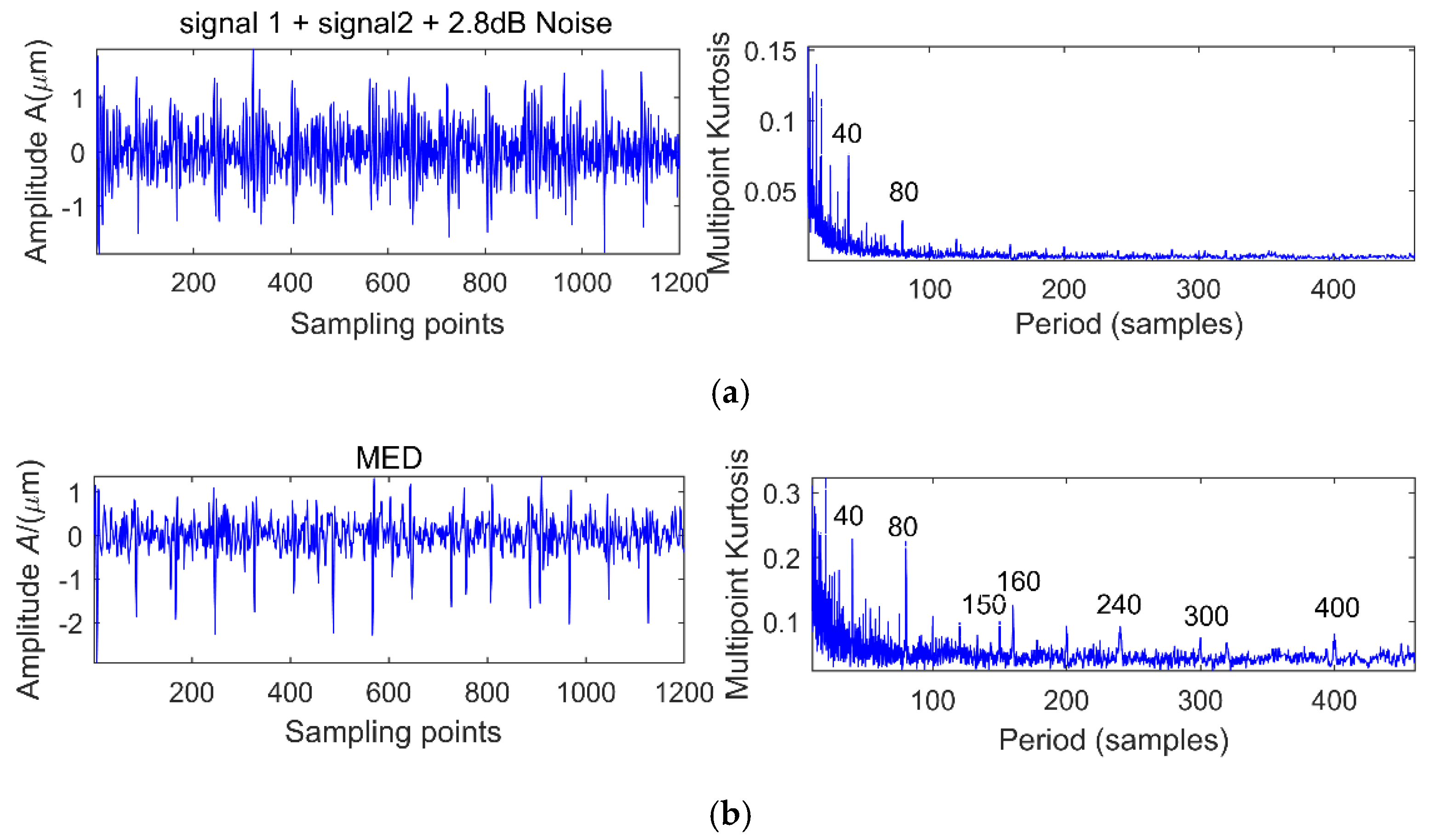
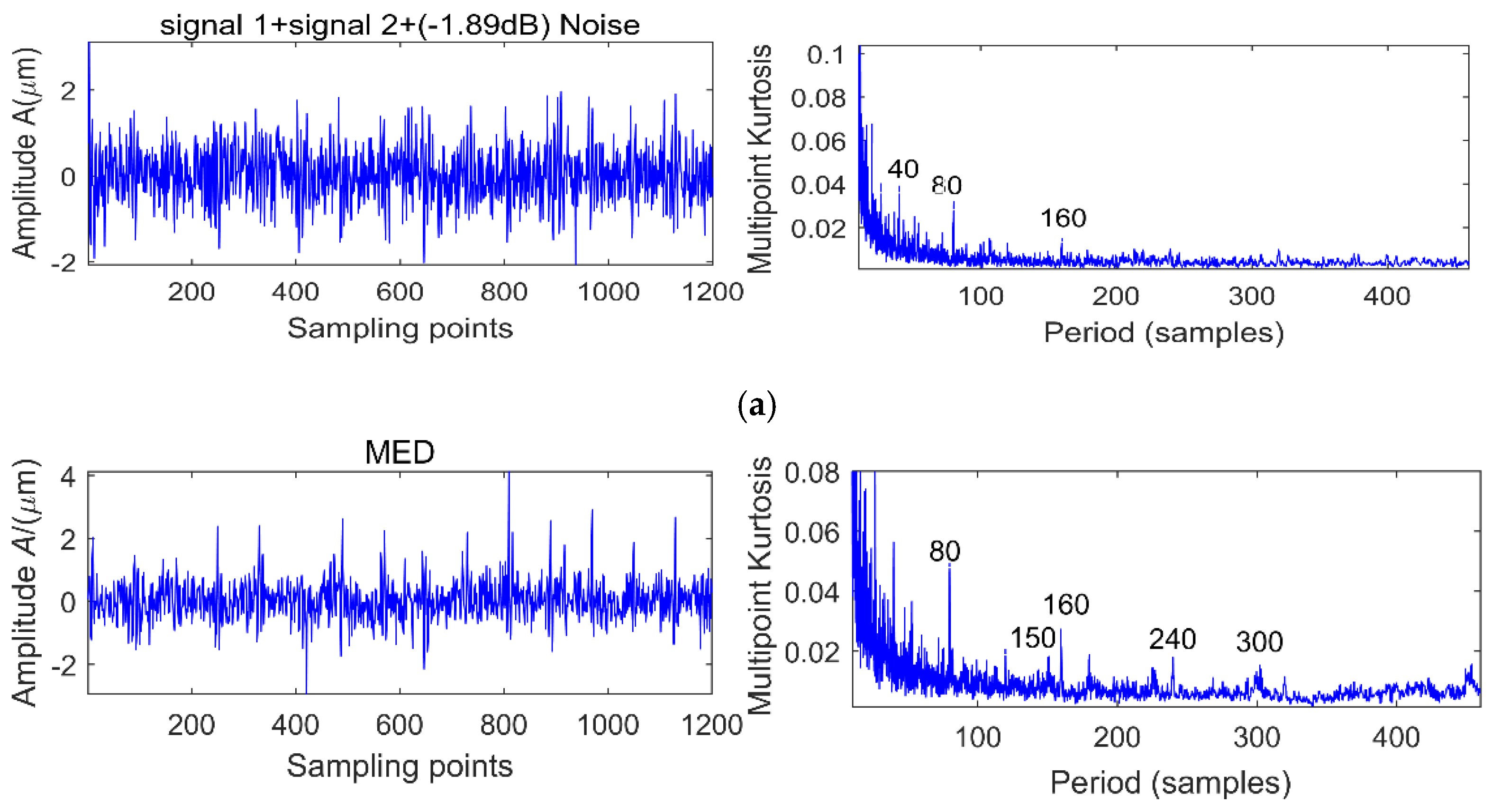

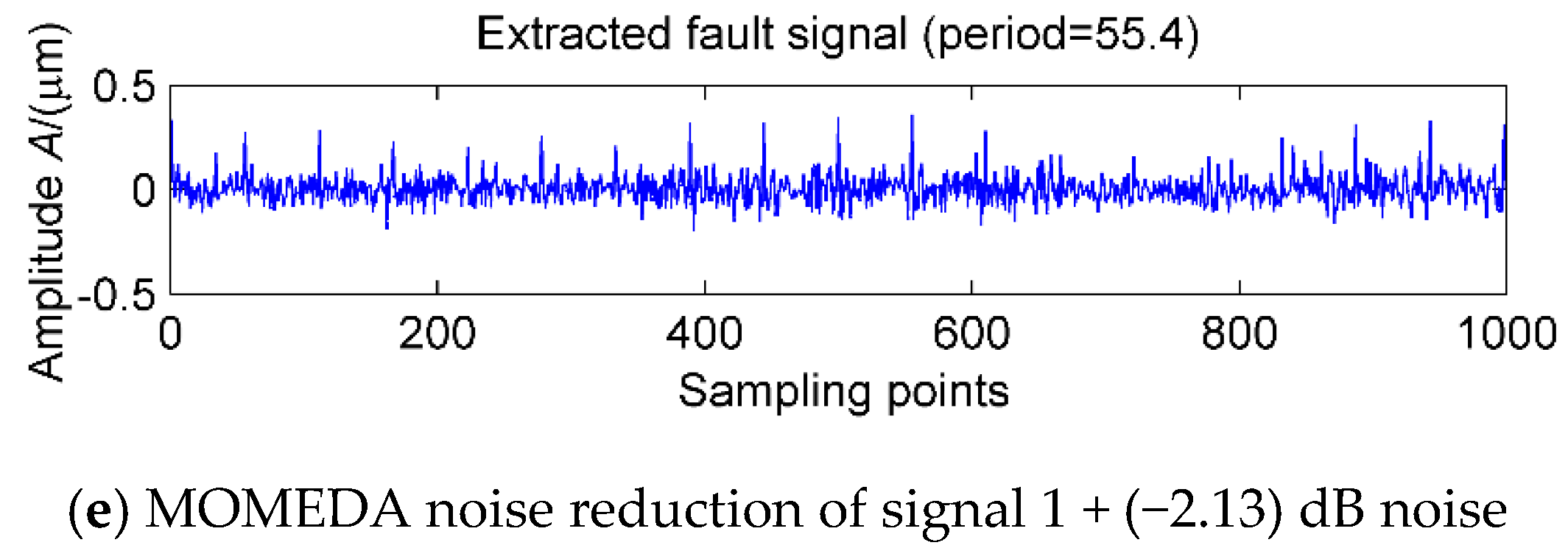
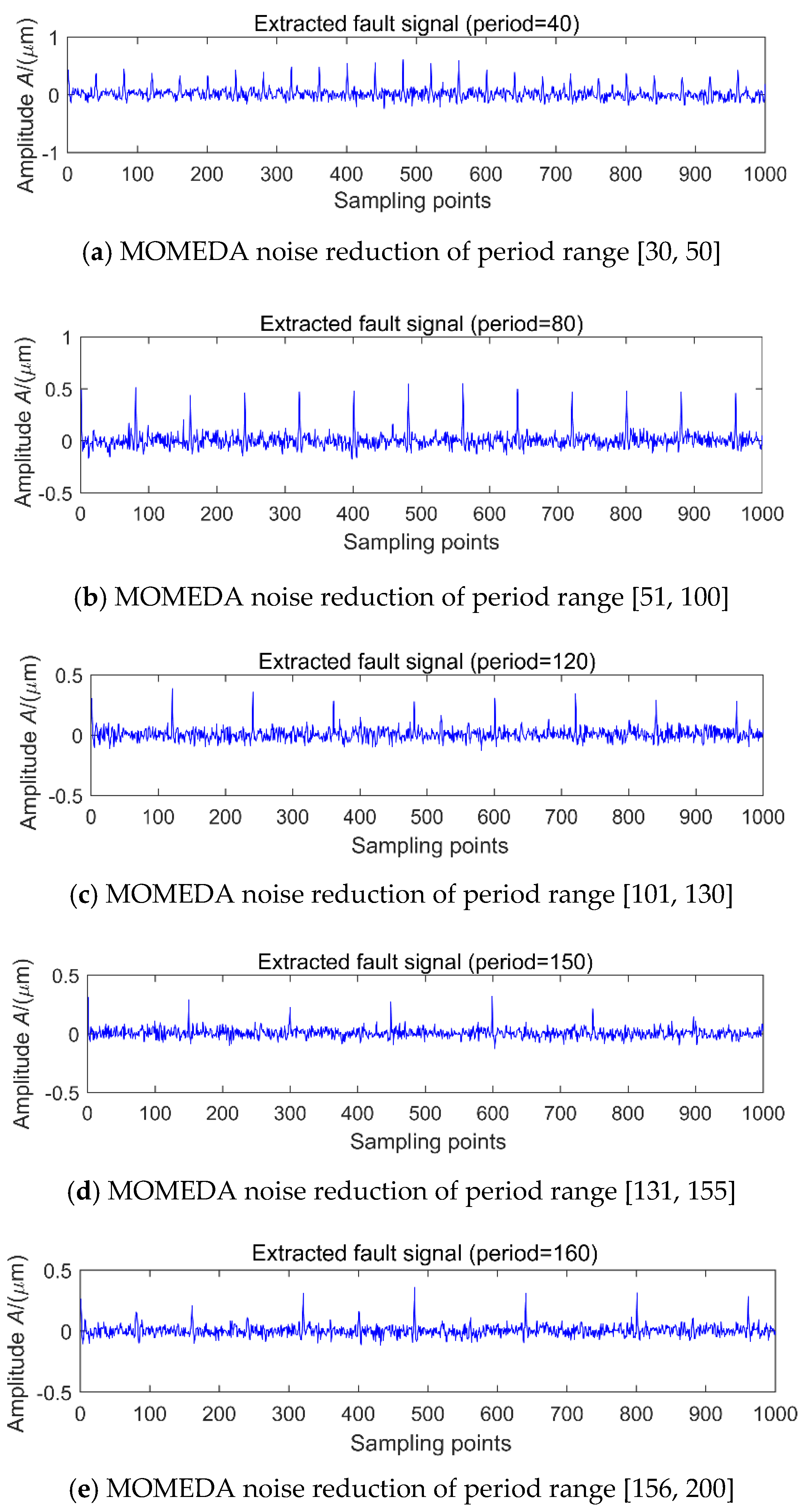
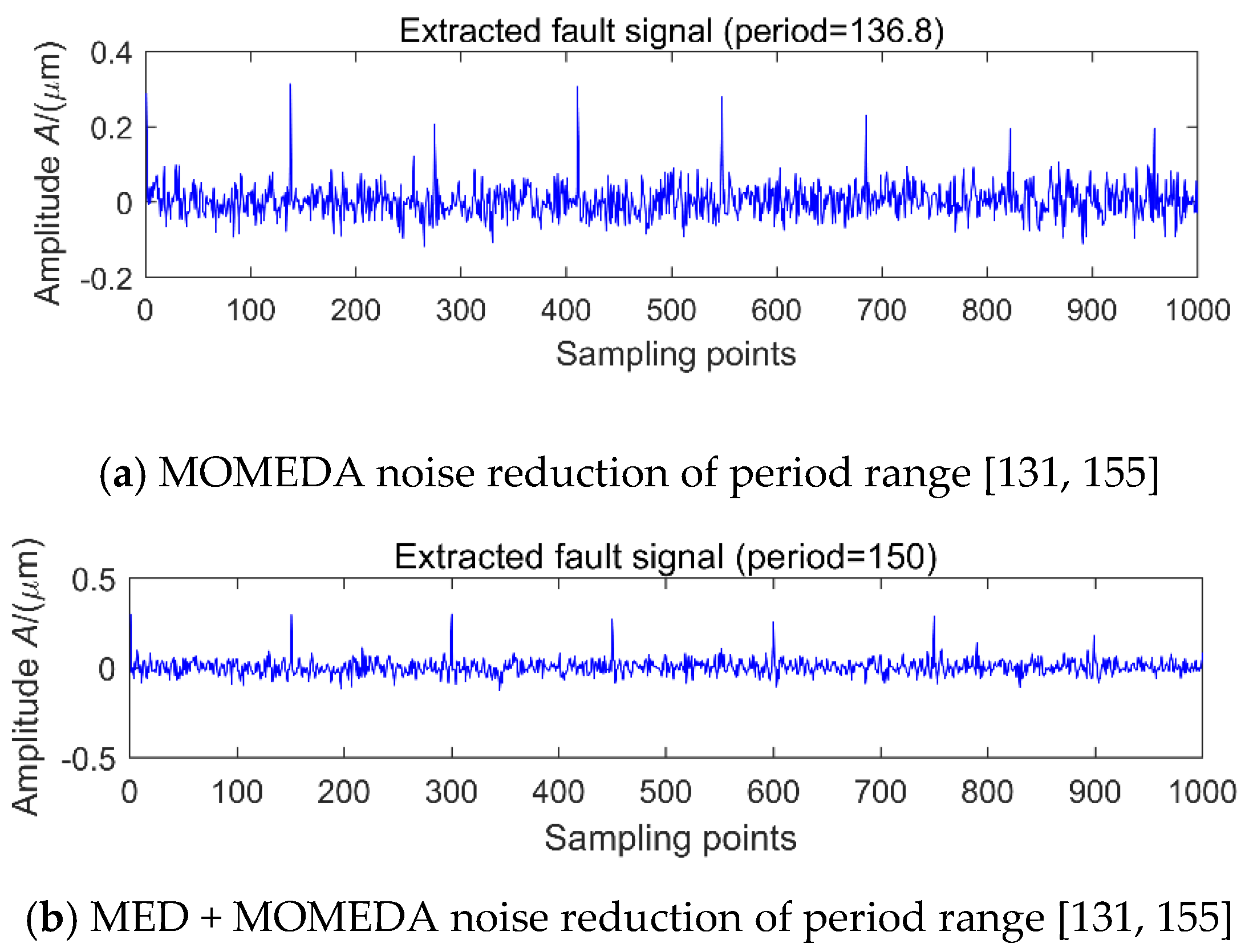
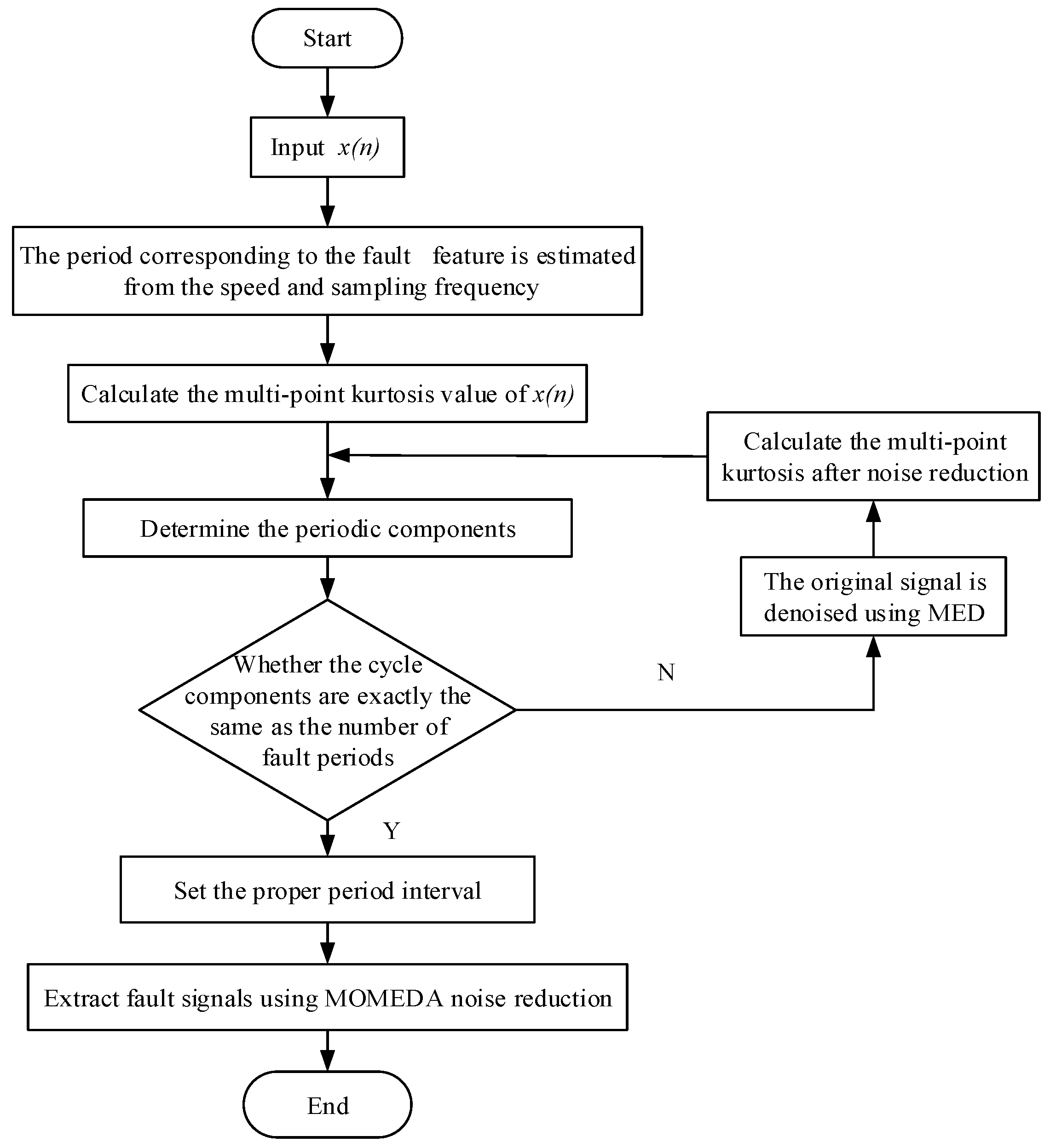
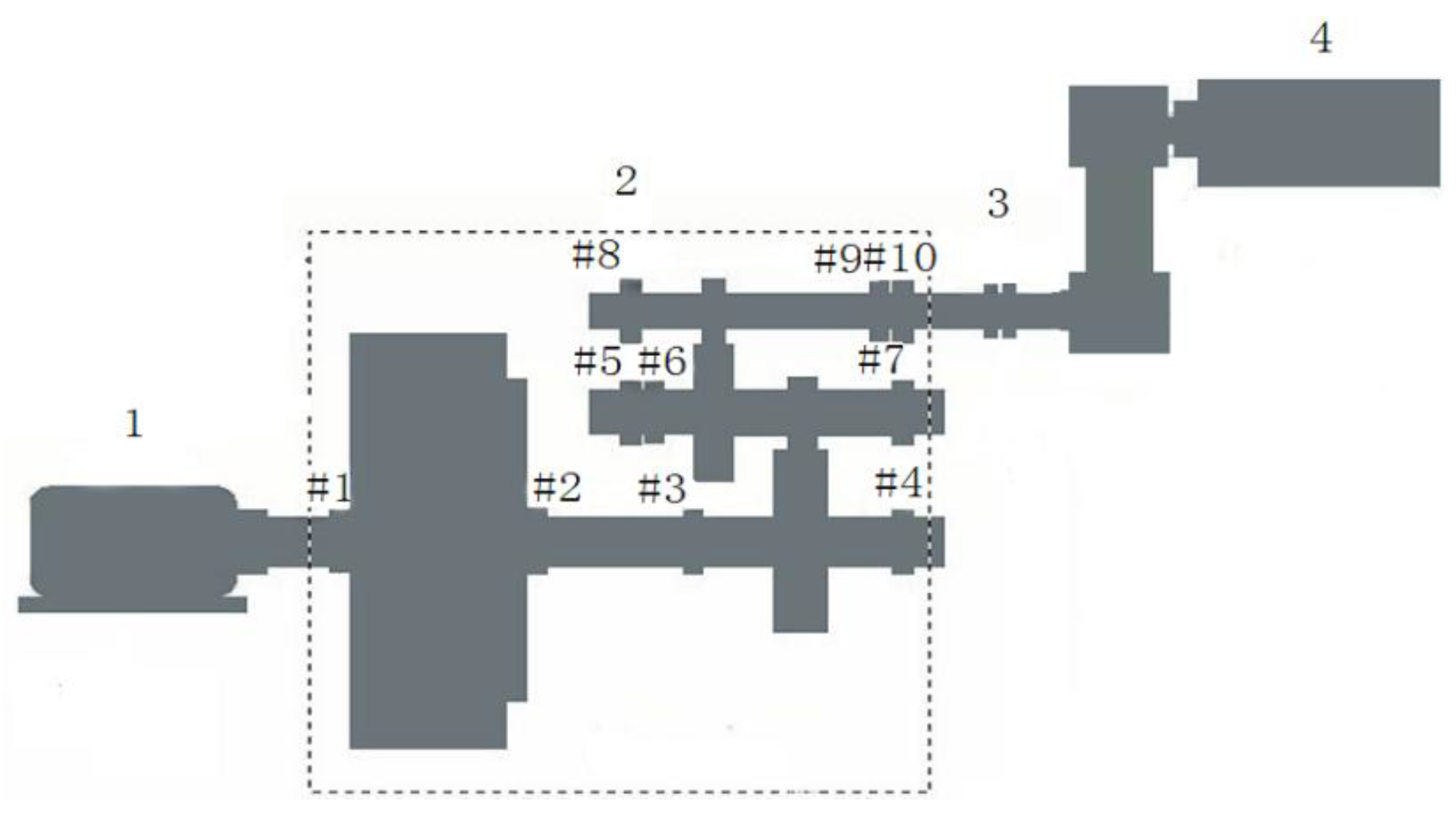


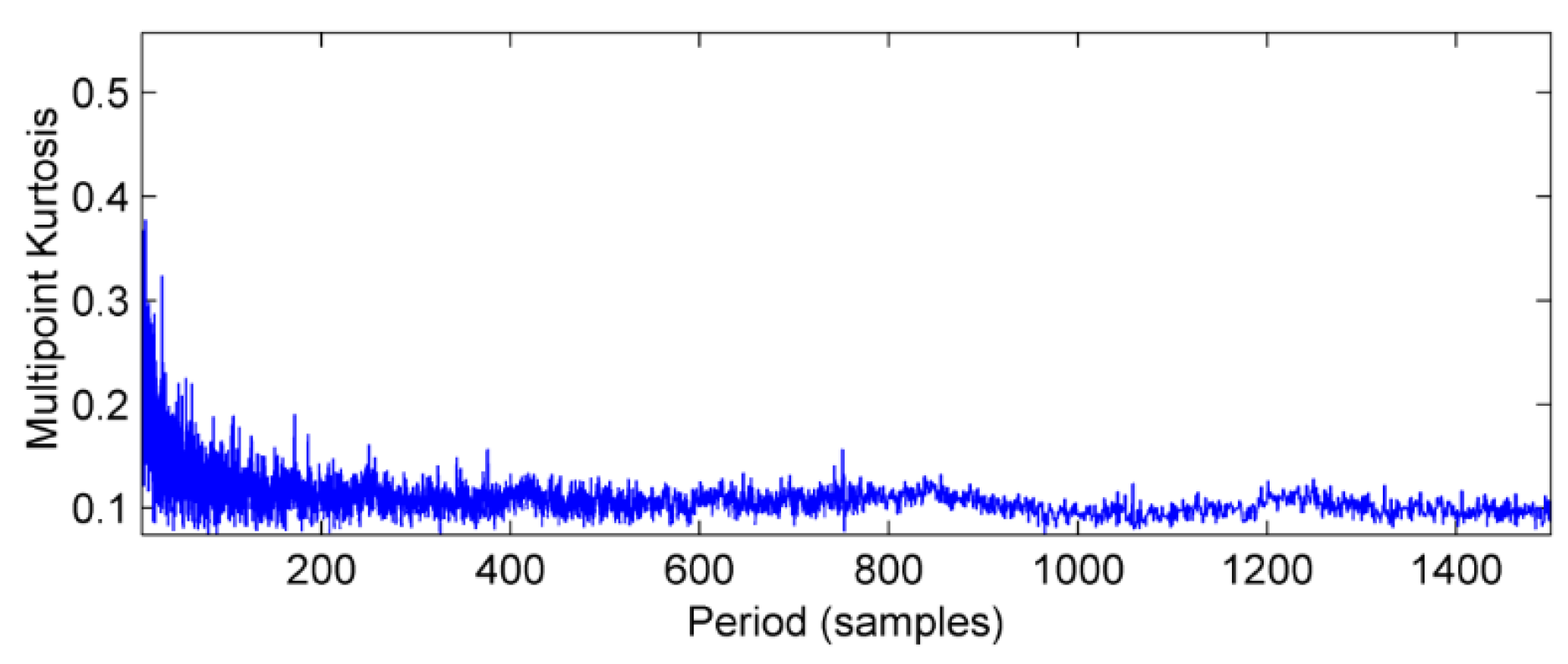

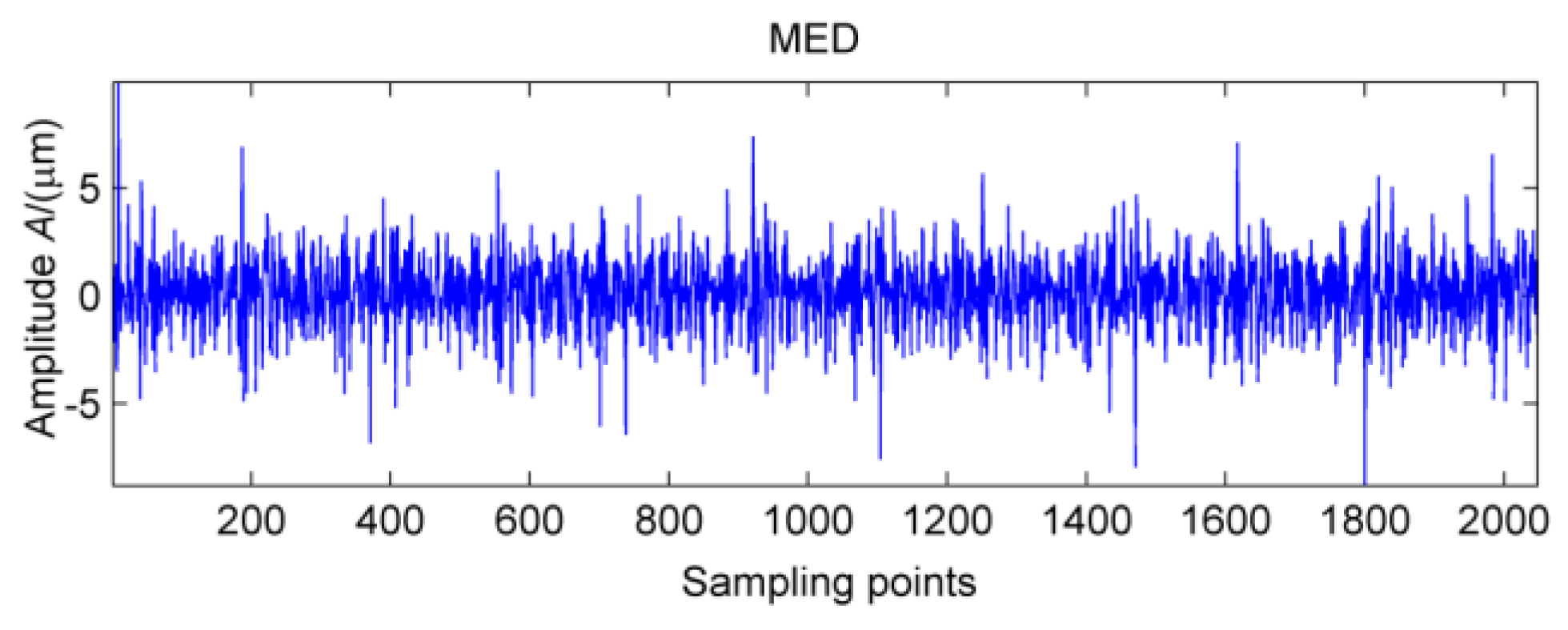

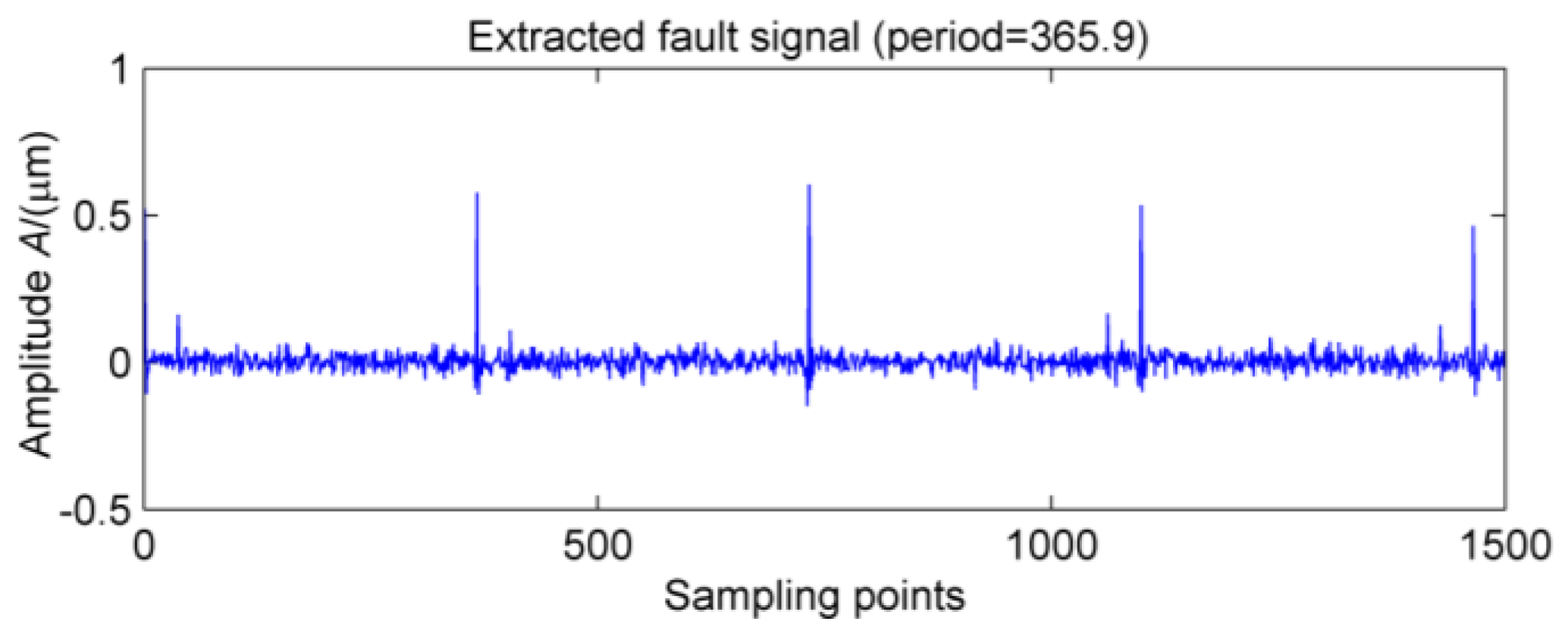
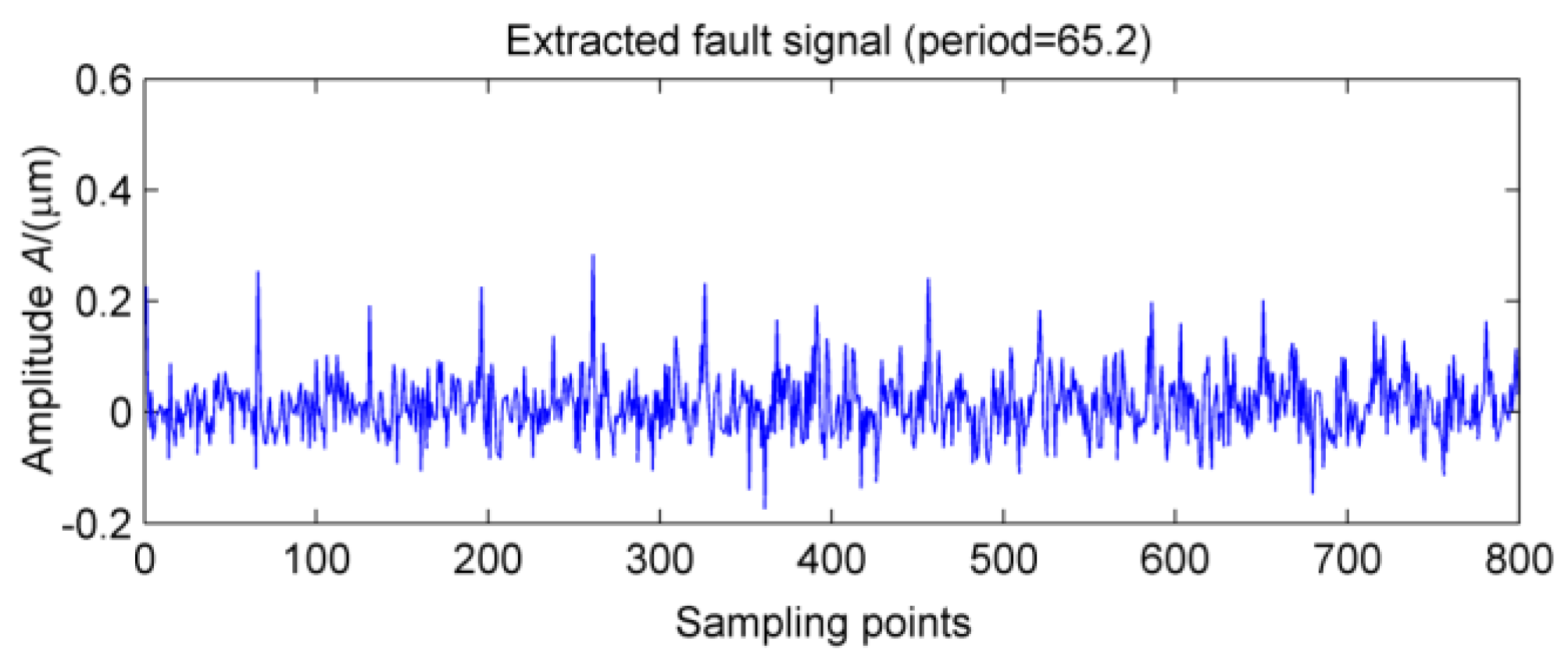
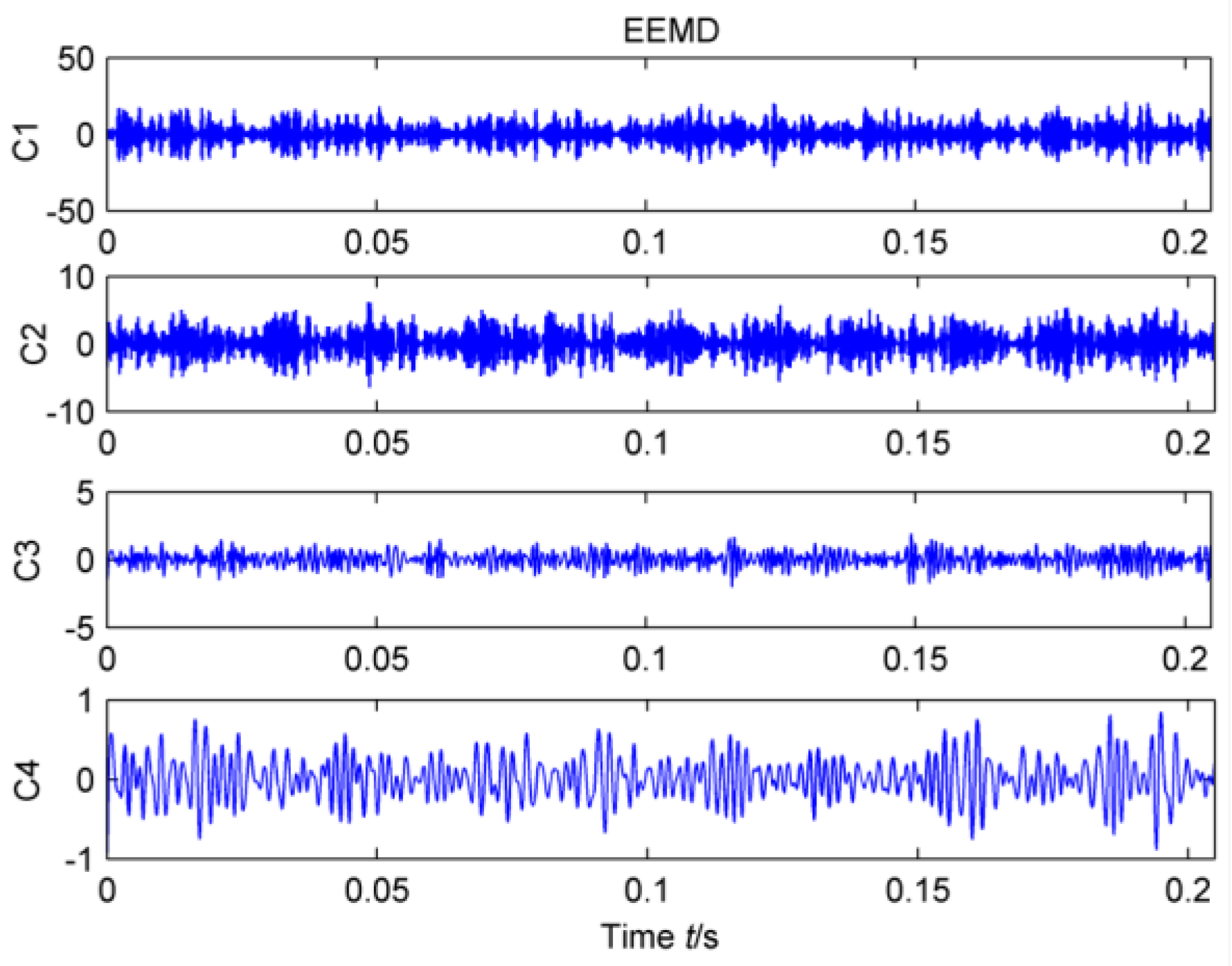
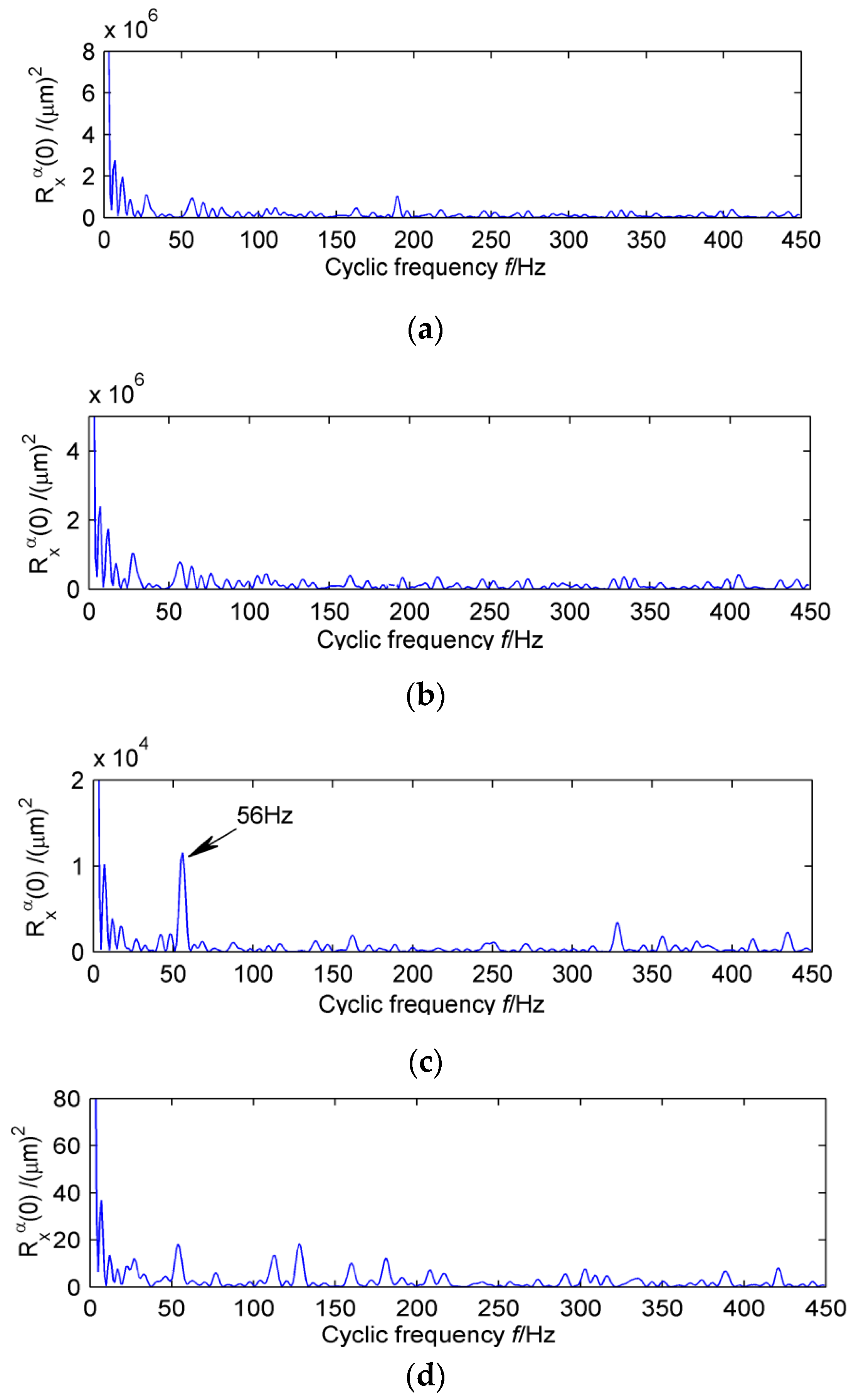
| Bearing Locations | Inner Ring Fault Period | Outer Ring Fault Period | Rolling Element Fault Period |
|---|---|---|---|
| High speed input shaft bearing #8 | 42.3 | 59.9 | 100.4 |
| High speed input shaft bearing #9 | 42.3 | 59.9 | 100.4 |
| High speed output shaft bearing #10 | 45.1 | 65.5 | 108.3 |
© 2017 by the authors. Licensee MDPI, Basel, Switzerland. This article is an open access article distributed under the terms and conditions of the Creative Commons Attribution (CC BY) license (http://creativecommons.org/licenses/by/4.0/).
Share and Cite
Wang, Z.; Wang, J.; Zhao, Z.; Wang, R. A Novel Method for Multi-Fault Feature Extraction of a Gearbox under Strong Background Noise. Entropy 2018, 20, 10. https://doi.org/10.3390/e20010010
Wang Z, Wang J, Zhao Z, Wang R. A Novel Method for Multi-Fault Feature Extraction of a Gearbox under Strong Background Noise. Entropy. 2018; 20(1):10. https://doi.org/10.3390/e20010010
Chicago/Turabian StyleWang, Zhijian, Junyuan Wang, Zhifang Zhao, and Rijun Wang. 2018. "A Novel Method for Multi-Fault Feature Extraction of a Gearbox under Strong Background Noise" Entropy 20, no. 1: 10. https://doi.org/10.3390/e20010010




